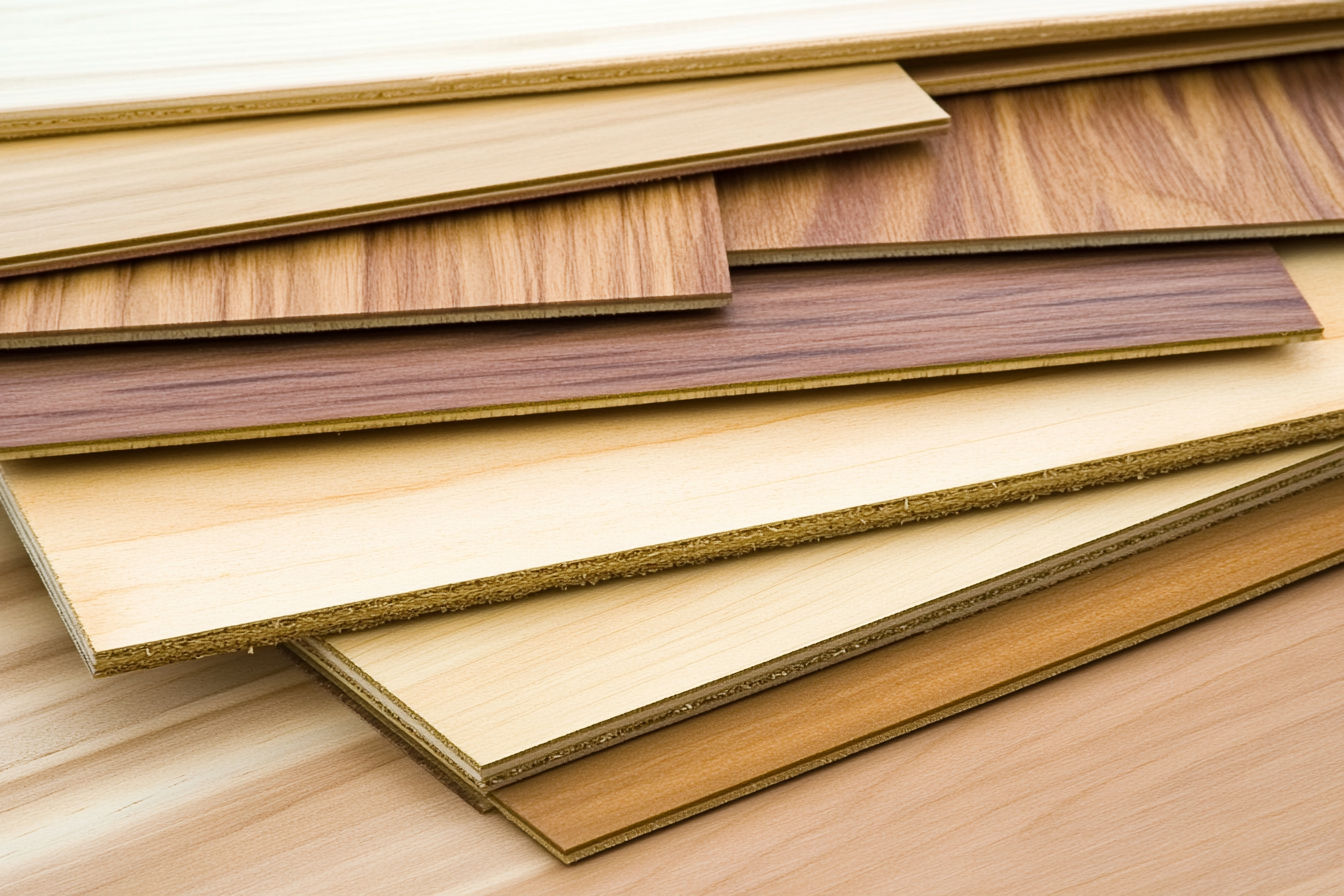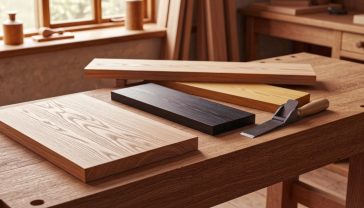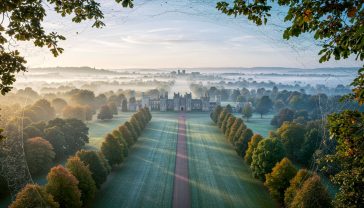Hardwood Plywood vs Softwood Plywood: The Guide to Choosing the Right Material
Confused by hardwood and softwood plywood? Our ultimate UK guide breaks down the differences in strength, cost, and finish to help you choose the best one.

This post may contain affiliate links. If you make a purchase through these links, we may earn a commission at no additional cost to you.
Walk into any timber yard or DIY shop in Britain, from a local builder’s merchant in the Scottish Highlands to a massive B&Q in London, and you’ll be faced with towering stacks of plywood. It’s one of the most useful materials around, found in everything from garden sheds and kitchen cabinets to the floorboards under your feet. But not all plywood is the same. You’ll see two main labels: hardwood and softwood.
At first glance, they might look pretty similar. They’re both sheets of wood made from thin layers glued together. So, what’s the big deal? Well, choosing between them is a bit like choosing between a Land Rover and a Mini. Both are brilliant cars, but you wouldn’t take a Mini on a muddy off-road track, and a Land Rover might be a bit much for nipping to the corner shop. Hardwood and softwood plywood have different strengths, weaknesses, and ideal jobs.
Picking the right one can be the difference between a project that lasts a lifetime and one that falls apart after a damp British winter. This guide is here to help you understand exactly what makes them tick. We’ll break down what they are, how they’re made, and what they’re best used for. Whether you’re a seasoned joiner, a weekend DIY warrior, or just curious about the stuff that builds our world, we’ll give you the confidence to pick the perfect plywood for your next project.
What Exactly Is Plywood? A Quick Refresher
Before we dive into the hardwood vs. softwood debate, let’s quickly get on the same page about what plywood actually is. It’s not just a solid slab of wood. Instead, it’s what’s known as an engineered wood product.
Imagine you have a log. Instead of sawing it into thick planks, you peel it on a massive lathe, a bit like unrolling a giant kitchen roll. This creates very thin sheets of wood called veneers.
To make a sheet of plywood, you take several of these veneers and glue them together. But here’s the clever bit: each layer is turned 90 degrees to the one below it. This is called cross-graining.
Why do this? Wood has a grain, like the fibres in a muscle. It’s very strong along the grain but much weaker across it. By alternating the direction of the grain in each layer, you share that strength in all directions. This simple trick makes plywood incredibly strong, stable, and much less likely to warp, shrink, or crack than a solid piece of wood of the same size. It’s a bit like weaving threads to make a strong piece of fabric. The final sheet is then pressed under immense heat and pressure to create a solid, stable board.
This basic principle is the same for both hardwood and softwood plywood. The crucial difference lies in the type of tree the veneers come from.
Hardwood vs. Softwood: It’s Not About How ‘Hard’ the Wood Is
This is the biggest and most common mistake people make. The names “hardwood” and “softwood” are a bit misleading. They don’t actually refer to how hard or soft the wood feels. You can find some hardwoods that are softer than the toughest softwoods.
The real difference is botanical—it’s all about the trees.
- Hardwoods come from deciduous trees. These are the trees that lose their leaves in the autumn, like oak, birch, beech, and mahogany. They are known as angiosperms, which means their seeds are enclosed in a fruit or nut (think of an acorn from an oak tree).
- Softwoods come from coniferous trees. These are the evergreens that have needles and cones, like pine, spruce, fir, and cedar. They are known as gymnosperms, and their seeds are exposed, usually dropping from cones.
Because of their cell structure, hardwoods tend to be denser and heavier than softwoods. This is a general rule, not an absolute one, but it’s the main reason for their different properties, costs, and uses.
Hardwood Plywood: The Tough and Tidy One
Hardwood plywood is made from veneers of those deciduous trees. In the UK, you’ll most commonly find it made from birch, poplar, oak, and tropical species like meranti or sapele.
Key Characteristics of Hardwood Plywood
- Strength and Durability: This is hardwood’s superpower. The dense and complex structure of hardwood trees makes for incredibly strong and resilient plywood. It can take a lot of punishment, resist dents and scratches, and handle heavy loads. Think of it as the sturdy oak table of the plywood world.
- Smooth, High-Quality Finish: Hardwood veneers have a tight, smooth grain with very few knots or imperfections. This makes them perfect for projects where the finish matters. You can sand it, paint it, or varnish it to a beautiful, clean surface. Birch plywood, in particular, is famous for its pale, smooth face that’s beloved by furniture makers.
- Stability: Thanks to the cross-graining process and the inherent stability of the wood, hardwood plywood holds its shape exceptionally well. It’s less likely to bend or warp when exposed to changes in temperature and humidity, which is a big plus in the unpredictable British climate.
- Weight: All that density comes at a price: weight. Hardwood plywood is significantly heavier than its softwood counterpart. This can make it harder to handle, especially in large sheets, but it also adds to its feeling of quality and sturdiness.
- Cost: As a rule, hardwood plywood is more expensive. The trees grow more slowly, and the process of making high-quality veneers is more demanding.
Common Types of Hardwood Plywood in the UK
- Birch Plywood: The undisputed king. Originating mostly from Russia and the Baltics, birch ply is prized for its strength, stability, and beautiful, creamy-white finish. It has multiple thin layers, which give it a clean, striped edge that designers often leave exposed. It’s the go-to choice for high-end furniture, cabinets, and architectural features.
- Poplar Plywood: A lighter-weight and more affordable hardwood option. It’s not as strong as birch but is still very stable and has a good, paintable surface. It’s often used for things like drawer bottoms, shelving, and caravan interiors where weight is a concern.
- Oak and Ash Plywood: These are often used as a ‘veneer-faced’ board. This means the core might be made of a cheaper hardwood (like poplar), but the top and bottom layers are made from attractive oak or ash veneers. This gives you the beautiful look of solid oak for things like doors and wall panels without the huge cost or risk of warping.
- Tropical Hardwood Plywood (Meranti, Sapele): Often labelled as ‘general purpose’ hardwood ply. It’s durable and strong but the finish can be a bit rougher than birch. It’s a solid workhorse for construction jobs where you need strength but the final look isn’t the top priority.
Best Uses for Hardwood Plywood
Hardwood plywood is the material of choice when strength, durability, and a clean finish are essential.
- Furniture Making: Perfect for cabinets, tables, desks, and shelving. Its smooth surface is ideal for painting or clear-finishing, and its strength ensures the furniture will last.
- High-End Joinery: Think custom-built kitchens, wardrobes, and architectural panelling. The stability of birch ply makes it perfect for doors that won’t warp.
- Flooring: Used as the structural subfloor in many homes because it provides a strong, flat, and stable base for carpet, laminate, or solid wood flooring. Heavy-duty hardwood ply can even be used as the final floor surface itself, sanded and sealed for a modern, industrial look.
- Decorative Wall and Ceiling Panels: The clean face of birch or the warm look of oak-faced ply can be used to create stunning feature walls.
- Skate Ramps and Climbing Walls: The ultimate test of strength and durability! Only the toughest multi-layered birch ply can stand up to this kind of abuse.
Softwood Plywood: The Practical Workhorse
Softwood plywood is made from veneers of coniferous trees, most commonly pine, spruce, or fir (often grouped together and called ‘spruce-pine-fir’ or SPF).
Key Characteristics of Softwood Plywood
- Cost-Effective: This is its biggest selling point. Softwood trees grow much faster than hardwoods, making the raw material cheaper and more readily available. This makes softwood plywood the budget-friendly choice for many jobs.
- Lightweight: Softwood is less dense than most hardwoods, so the plywood is lighter and easier to carry around a building site or lift into a loft. This can save a lot of sweat and effort on big projects.
- Good Structural Strength: While it might not be as dense or hard-wearing as hardwood ply, don’t underestimate softwood plywood. The cross-graining still makes it a very strong and rigid material, perfectly capable of handling structural loads.
- More Knots and Imperfections: The face of softwood plywood is more rustic. You’ll see more knots from branches and the grain pattern is more prominent. This means it’s not usually chosen for its looks. If you want a smooth, flawless finish, you’ll have to do a lot of filling and sanding.
- Flexibility: It’s a bit more flexible than hardwood ply. This can be an advantage in some construction scenarios, but it also means it’s more likely to bend or sag under a permanent heavy load (like on a poorly supported shelf).
Common Types of Softwood Plywood in the UK
- Structural Softwood Plywood (Pine/Spruce): This is the most common type you’ll see in a builder’s merchant. It’s graded for its structural performance, not its looks. You’ll see grades like C+/C, which means one side (the C+) is sanded a bit better than the back (the C side), but both will have knots and filler patches.
- Shuttering Plywood: This is a very rough, low-grade softwood ply designed for a single purpose: making temporary moulds for setting concrete (known as ‘formwork’ or ‘shuttering’). It’s cheap and cheerful and not intended for permanent use.
- Douglas Fir Plywood: A higher-quality softwood ply from North America. It’s known for being exceptionally strong and stiff for its weight, and has a distinctive pinkish-orange hue. It’s a premium structural panel often used in timber frame construction.
Best Uses for Softwood Plywood
Softwood plywood is the go-to for construction and structural projects where cost is a major factor and a perfect finish is not.
- Wall Sheathing: Used on the outside of timber-framed houses (underneath the bricks or cladding) to provide rigidity and strength to the whole structure.
- Roof Decking: The boards that are laid over the roof joists to create the solid surface that the felt and tiles are fixed to.
- Hoarding: The temporary fences you see around building sites are almost always made from softwood plywood. It’s cheap, strong enough for the job, and can be painted with company logos.
- Sheds and Garden Buildings: A perfect material for shed walls, floors, and roofs. It’s affordable and strong enough to create a sturdy outdoor structure (though it must be properly treated or painted to protect it from the British rain).
- General DIY Projects: Great for things like workshop shelving, packing crates, or building a simple workbench. Its low cost means you don’t have to worry too much if you make a mistake.
Head-to-Head Comparison: Hardwood vs. Softwood Plywood
| Feature | Hardwood Plywood | Softwood Plywood | The Winner For… |
|---|---|---|---|
| Strength & Durability | Excellent. Very dense, high load-bearing capacity, resists dents. | Good. Strong and rigid for construction, but less dense. | Hardwood (For heavy-duty applications) |
| Appearance & Finish | Excellent. Smooth, clean face with few knots. Perfect for painting/finishing. | Fair to Poor. Knotty, rustic appearance. Not for decorative use. | Hardwood (For visible, aesthetic projects) |
| Cost | Higher. Slower-growing trees and more processing make it more expensive. | Lower. Faster-growing trees and simpler processing make it cheaper. | Softwood (For budget-conscious projects) |
| Weight | Heavy. The high density makes it harder to handle. | Lightweight. Easier to transport and install. | Softwood (For ease of handling) |
| Main Use Case | Interior Joinery & Furniture. Where looks and a fine finish matter. | Structural Construction. Where strength and cost are key. | Depends on the job! |
Beyond the Basics: Plywood Grades and Special Types
When you buy plywood in the UK, it’s not just about hardwood or softwood. You also need to know about grades and special types that are designed for specific jobs.
Understanding Plywood Grades
Plywood is graded based on the quality of the face veneers. The grade tells you how many knots, splits, or filler patches to expect. The system can seem confusing, but it usually follows a letter scale, from A (the best) to D (the lowest grade).
- A Grade: A perfect, smooth, sanded face. No knots or repairs. Very rare and expensive.
- B Grade: Mostly clear, with a few small, neat knots or minor repairs. This is the grade you’ll find on high-quality birch plywood.
- C Grade: Has some knots, splits, and discolouration. Some holes may be filled and sanded. This is the standard for structural softwood ply (often sold as C+/C).
- D Grade: The lowest grade, with lots of knots, splits, and un-filled holes. Used where appearance doesn’t matter at all, like in shuttering ply.
So, a sheet of B/BB grade Birch Plywood means one side (the B face) is very high quality and the other side (the BB face) allows for a few more small patches or knots. This is perfect for a cabinet, where you want the best face on the outside and can use the slightly lower-grade face on the inside.
Special Types of Plywood
- Marine Plywood: This is the ultimate in durable plywood. It’s a common myth that it’s waterproof. No plywood is truly waterproof. Instead, Marine Plywood is made from durable hardwood species with a special, top-grade waterproof glue (WBP – Water and Boil Proof). Crucially, it has no core gaps. Every layer is a high-quality, solid veneer, so there are no little voids where water could collect and cause rot. It’s designed for boat building and environments with constant exposure to moisture. It’s very expensive and often overkill for a simple garden project.
- Exterior Plywood: This plywood is made with the same WBP glue as marine ply, making it resistant to moisture. However, the quality of the wood veneers isn’t as high as marine ply. It’s the right choice for things like shed walls or fascia boards, but the edges and faces must be sealed with paint or varnish to protect it from the weather. Most structural softwood plywood sold in the UK is made with WBP glue and is therefore suitable for exterior use, provided it’s properly protected.
- Flexible Plywood (‘Bendy Ply’): A special type of plywood with a unique grain structure that allows it to be bent into tight curves without splitting. It’s perfect for making curved reception desks, arched doorways, or creative furniture.
Making the Right Choice for Your Project
So, how do you decide? Let’s run through some common UK projects.
Project: Building a Set of Bespoke Wardrobes for a Bedroom
- Your Choice: Hardwood Plywood (Birch)
- Why? You need a material that is strong enough to build a solid carcase and doors that won’t warp. Most importantly, you need a perfectly smooth surface for painting. The B/BB grade of birch plywood gives you that premium finish.
Project: Boarding Out Your Loft for Storage
- Your Choice: Softwood Plywood (Structural)
- Why? Looks don’t matter up in the loft. You need a strong, rigid board that’s cheap and easy to get up the ladder. Tongue and groove softwood loft panels are perfect for this job.
Project: Constructing a Sturdy Workbench for Your Garage
- Your Choice: Can be either, but Softwood Plywood is the practical choice.
- Why? A thick sheet of softwood ply will be more than strong enough and much cheaper. You could use a hardwood ply like birch for the top surface for extra durability and a smoother work area if your budget allows.
Project: Building a Garden Planter
- Your Choice: Exterior or Marine Plywood (Hardwood is better)
- Why? This project will be constantly exposed to wet soil and rain. You need plywood made with WBP glue. While exterior softwood ply would work if sealed properly, a durable tropical hardwood or marine ply would offer much better long-term resistance to rot.
Sustainability: A Modern Concern
In today’s world, we can’t talk about wood without talking about where it comes from. For a long time, the plywood industry was linked with illegal logging and deforestation, especially for tropical hardwoods.
Thankfully, things have changed. Reputable suppliers in the UK now focus on selling plywood that is sustainably sourced. When you buy, look for one of two labels:
- FSC (Forest Stewardship Council): This is the gold standard. It guarantees that the wood comes from a forest that is managed responsibly, protecting wildlife, the local community, and ensuring the forest will be around for future generations.
- PEFC (Programme for the Endorsement of Forest Certification): Another widely recognised certification that ensures timber is sourced from sustainably managed forests.
Choosing certified plywood is crucial. It ensures you’re not contributing to environmental damage and supports a more responsible global timber trade. Most plywood sold by major UK retailers today is certified, but it’s always worth checking the product description or asking the supplier.
The Final Verdict
The battle between hardwood and softwood plywood isn’t about one being better than the other. It’s about using the right tool for the right job.
Choose Hardwood Plywood when:
- You need a beautiful, smooth finish for painting or varnishing.
- The project demands maximum strength, rigidity, and durability.
- The edges will be a visible, decorative feature (e.g., birch ply furniture).
- Your budget can stretch to a more premium material.
Choose Softwood Plywood when:
- The job is structural and the plywood won’t be seen.
- Cost is your main priority.
- You need a lightweight material that’s easy to handle.
- You’re building something for the garden or a workshop where a rustic finish is acceptable.
By understanding these key differences, you can move beyond simply buying a sheet of ‘ply’. You can make an informed choice, saving money where you can and investing in quality where it counts. You can build projects that are not only fit for purpose but are also built to last, using one of the most versatile and ingenious materials ever invented.
Further Reading
For those looking to dive even deeper, here are some highly respected UK-based resources:
- TRADA (The Timber Research and Development Association): The UK’s leading authority on wood and timber. Their website offers incredibly detailed technical specifications on all types of wood products, including plywood.
- Wood Campus: An online learning resource packed with courses and information about wood as a material, supported by various industry bodies.






